Gross motor play activities are essential to childhood development, allowing kids to develop their physical, cognitive, and social skills. Both indoor and outdoor activities can help to promote gross motor skills!
In this post, I’ll discuss the importance of gross motor play, explore a variety of engaging activities, and offer practical tips for parents and caregivers on facilitating these activities.
You’ll learn how to incorporate gross motor play into everyday routines, ensuring kids have the best opportunities for growth and development.
In this post:
- What is gross motor play?
- The Importance of Gross Motor Play
- Gross Motor Play Activities for Infants
- Gross Motor Play Activities for Toddlers
- Gross Motor Play Activities for Preschoolers
- Gross Motor Play Activities for School Age Kids
- Creating a Safe and Engaging Environment for Gross Motor Play Activities
- Incorporating Gross Motor Play into Daily Routines
- Tips for Encouraging Reluctant Movers
What is Gross Motor Play?
Gross motor play refers to activities involving the body’s large muscles, such as those in the arms, legs, and torso.
These activities help kids develop strength, coordination, balance, and endurance. Examples of gross motor play include running, jumping, climbing, throwing, and kicking.
Unlike fine motor skills, which involve the small muscles of the hands and fingers, gross motor skills are crucial for overall physical health and well-being.
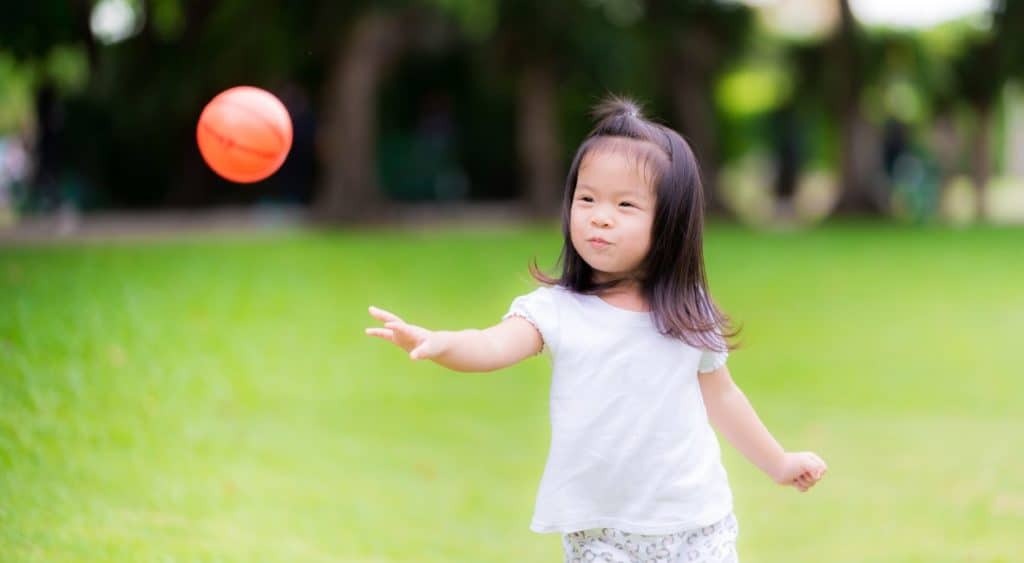
The Importance of Gross Motor Play
Physical Benefits
- Muscle Development: Kids build and strengthen their muscles, improving overall physical fitness. Strong muscles support good posture, enhance endurance, and reduce the risk of injuries.
- Coordination and Balance: Activities such as hopping, skipping, and balancing on one foot improve coordination and balance. These skills are fundamental for performing everyday tasks and participating in sports.
- Cardiovascular Health: Running, jumping, and other high-energy activities get the heart pumping, promoting cardiovascular health. Regular physical activity can help prevent childhood obesity and associated health issues.
Cognitive Benefits
- Brain Development: Physical activity stimulates brain development and function. Research shows that kids who engage in regular physical play have better memory, attention, and problem-solving skills.
- Learning Readiness: Gross motor play enhances a child’s ability to concentrate and stay focused. This readiness to learn is critical when they start school and engage in more structured educational activities.
Social and Emotional Benefits
- Confidence and Self-Esteem: Mastering new physical skills boosts a child’s confidence and self-esteem. Successfully climbing a playground structure or riding a bike for the first time are significant achievements.
- Social Skills: Many gross motor activities are group-based, fostering teamwork, cooperation, and social interaction. Kids learn to take turns, share, and develop empathy through play.
- Emotional Regulation: Physical play provides an outlet for releasing energy and managing stress. It helps kids develop resilience and emotional regulation skills.
Gross Motor Play Activities for Different Age Groups
Infants (0-12 Months)
1. Tummy Time
Place your baby on their tummy for short periods while they are awake. This activity strengthens neck, shoulder, and arm muscles and promotes motor skills development.
- Lay a colorful mat or blanket on the floor and place toys just within reach to encourage your baby to lift their head and reach out.
- Place a mirror in front of your baby to engage their attention and encourage lifting their head.
Minimize the time your baby spends in baby containers, such as swings and bouncy seats, and allow them space to move freely.
2. Reaching and Grasping
This activity enhances their coordination and muscle strength.
- Hang soft toys or rattles above your baby’s crib or play mat to encourage reaching and batting.
- Use a baby gym with hanging toys to promote reaching and grasping.
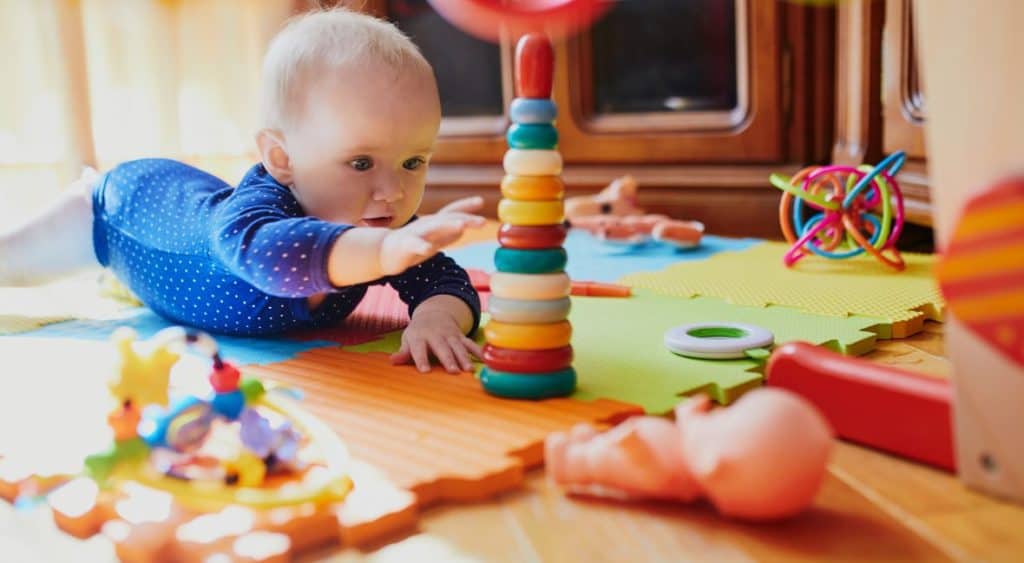
3. Rolling Over
Provide ample space for your baby to roll from their back to their tummy and vice versa. This movement is crucial for developing core muscles.
- Place a toy just out of reach to motivate your baby to roll towards it.
4. Kicking Games
This activity helps develop leg muscles and coordination while engaging them in playful interaction.
- Place a soft ball or toy at your baby’s feet and encourage them to kick it.
- Use a musical kick gym that responds with lights and sounds when your baby kicks.
5. Crawling Encouragement
This fosters their exploration and muscle development, promoting overall physical growth.
- Place toys or objects just out of reach to motivate crawling.
- Create a soft obstacle course with cushions and tunnels for your baby to navigate.
Check out my favorite crawling baby toys to encourage your little one to move.
Toddlers (1-3 Years)
1. Walking and Running
Provide safe, open spaces for toddlers to practice walking and running. Parks, playgrounds, and backyards are ideal for these activities.
- Create an indoor obstacle course using pillows and soft furniture to navigate around.
- Play tag or chase games in a safe, open area.
2. Climbing
Equip your home or visit playgrounds with climbing structures suitable for toddlers. Climbing helps develop strength, coordination, and problem-solving skills.
- Set up a small indoor climbing structure, soft play equipment, or use sturdy furniture for supervised climbing.
- Visit playgrounds with low climbing structures designed for toddlers or set up a backyard climber.
3. Push and Pull Toys
Toys that can be pushed or pulled, such as toy cars or wagons, encourage toddlers to move and explore their environment.
- Provide toy strollers, shopping carts, or wagons for your toddler to push and pull around the house or yard.
- Use large toy cars that your toddler can push along the floor.
4. Ride-On Toys
Ride-on toys help toddlers develop leg muscles and balance while exploring their environment.
- Provide ride-on toys like tricycles or balance bikes for outdoor play.
- Use push cars or ride-on animals for indoor movement.
4. Dancing
Add some music and movement activities to your day! Dancing helps develop their rhythm, coordination, and enjoyment of physical activity.
- Play music and dance together, encouraging your toddler to imitate your movements.
- Use action songs like “Head, Shoulders, Knees, and Toes” to incorporate movement.
5. Ball Play
Ball play is fun and promotes kicking, running, teamwork, and enhances motor skills and hand-eye coordination.
- Set up a mini soccer game with soft balls and small goals.
- Practice rolling, throwing, and kicking balls of different sizes and textures.
Preschoolers (3-5 Years)
1. Jumping
Jumping activities enhance leg strength and coordination.
- Play hopscotch on the sidewalk or use masking tape to create a hopscotch grid indoors.
- Use a mini-trampoline with a handlebar for safe jumping.
2. Throwing and Catching
Use soft balls to play simple games of catch. These activities improve hand-eye coordination and reaction time.
- Play catch with soft, lightweight balls or beanbags.
- Set up a target practice game using a bucket or hoop for your child to throw balls into.
3. Balance Activities
Balancing activities develop core strength and stability.
- Create a balance beam using a piece of wood or a line of tape on the floor.
- Play “walking the tightrope” by balancing on a line of tape or a low balance beam.
- Allow kids to practice riding a balance bike.
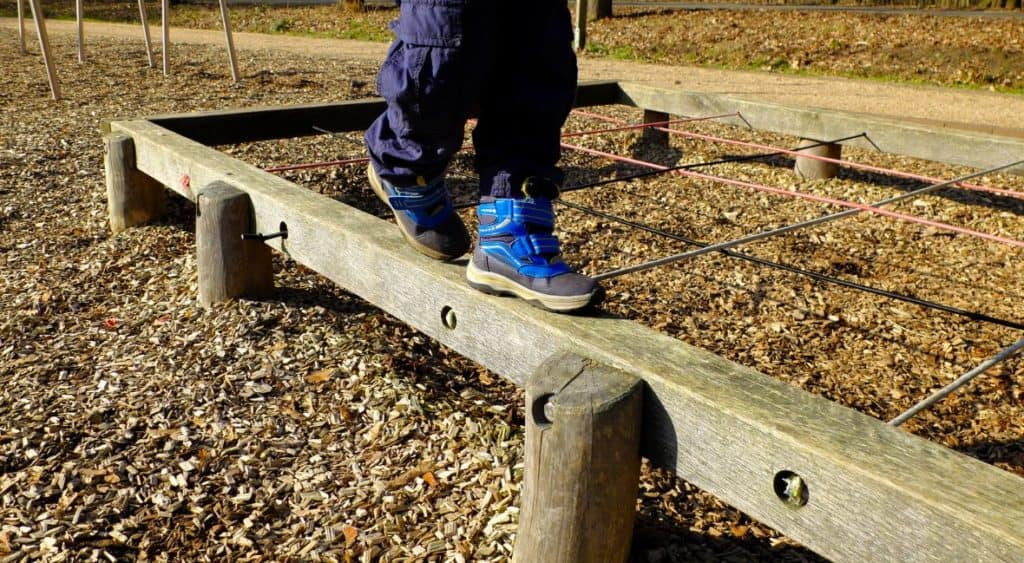
4. Scooter Riding
Scooter riding develops balance and coordination, offering an exciting way to stay active.
- Provide a scooter and safety gear for your child to ride around the yard or on a safe sidewalk.
- Set up a scooter obstacle course with cones or other markers.
5. Parachute Play
Parachute play promotes teamwork and gross motor skills, creating a fun and interactive experience.
- Use a play parachute or large sheet for group games that involve running under, lifting, and shaking the parachute.
- Play games like “Mushroom,” where kids lift the parachute and sit under it as it floats down.
School-Age Kids (6-12 Years)
1. Biking
Teach your child to ride a bike. Biking is an excellent cardiovascular exercise that also promotes coordination and balance.
- Organize family bike rides in your neighborhood or at local parks.
- Set up a bike obstacle course in a safe, open area to challenge their skills.
2. Sports
Encourage participation in team sports like soccer, basketball, or swimming. These activities build social skills, teamwork, and physical fitness.
- Enroll your child in community sports leagues, such as soccer, basketball, or swimming.
- Allow kids to organize their own backyard games like kickball, badminton, or volleyball.
3. Dance and Movement
Enroll your child in dance classes or have dance parties at home. Dancing is a fun way to improve coordination, rhythm, and flexibility.
- Host dance parties at home with their favorite music.
- Enroll them in dance classes, gymnastics, or martial arts.
4. Jump Rope
Jump rope enhances coordination, rhythm, and cardiovascular health through an engaging activity.
- Teach your child different jump rope games and rhymes.
- Organize jump rope challenges with friends or family.
5. Hiking and Nature Walks
Hiking encourages physical activity and appreciation of the outdoors, stimulating curiosity and learning.
- Plan family hikes on local trails or nature walks in parks.
- Encourage exploration and observation of nature while walking.
Related: 81 Free Outdoor Activities for Kids
6. Obstacle Courses
Obstacle courses challenge agility, strength, and problem-solving skills, making physical activity diverse and engaging.
- Create complex obstacle courses using household items or outdoor equipment.
- Include activities like crawling under tables, jumping over ropes, and balancing on beams.
Creating a Safe and Engaging Environment for Gross Motor Play Activities
Indoor Play
Indoor spaces can be used for gross motor activities!
Here are my top tips:
• Clear Space
Ensure there is enough open space for safe movement. Move furniture aside if necessary to create a play area.
• Safe Surfaces
Use soft mats or carpets to cushion falls and reduce the risk of injury.
• Age-Appropriate Equipment
Provide age-appropriate toys and equipment that encourage movement, such as tunnels, soft balls, and ride-on toys.
Outdoor Play
Outdoor spaces can provide even more space for kids to move their bodies.
Here are my tips for outdoor gross motor play:
• Supervision
Always supervise kids during outdoor play to ensure their safety. Be aware of potential hazards like uneven ground or sharp objects.
• Playground Safety
Choose playgrounds with well-maintained equipment and soft surfaces, such as wood chips or rubber mats.
• Weather Considerations
Dress kids appropriately for the weather and provide plenty of water to stay hydrated during play.
- Check out all my favorite rain gear for getting outside on those drizzly days!

Incorporating Gross Motor Play into Daily Routines
Here are a few ways to incorporate more movement into your day:
- Morning Stretches: Start the day with a few simple stretches or yoga poses to wake up the body and mind.
- Active Commutes: If possible, walk or bike to school or other activities instead of driving. This adds valuable movement to the day.
- Playtime Breaks: Incorporate short play breaks throughout the day, especially during long periods of sitting, such as while doing homework or watching TV.
- Family Activities: Plan family outings that involve physical activity, such as hiking, swimming, or playing at the park.
Tips for Encouraging Reluctant Movers
- Make it Fun: Choose activities that your child enjoys and find creative ways to make physical play engaging. Incorporate music, games, and imaginative play.
- Lead by Example: Kids are more likely to be active if they see their parents and caregivers engaging in physical activity. Be a role model by participating in active play with your child or in front of your child.
- Create a Routine: Establish a regular routine for physical play to make it a natural part of your child’s day. Consistency helps build habits.
Conclusion
Gross motor play activities are fundamental to kids’ holistic development. Parents and caregivers can support their kid’s physical, cognitive, and social-emotional growth by understanding their importance and incorporating them into daily routines.
From infants practicing tummy time to school-age kids participating in team sports, there are countless ways to engage in gross motor play. Creating safe and engaging environments, adapting activities to meet individual needs, and using technology mindfully are all crucial steps in promoting a healthy, active lifestyle for kids.
Encourage your kids to explore, move, and play every day. Doing so will set the foundation for a lifetime of physical health, cognitive development, and emotional well-being.
So, let’s get moving and make gross motor play a joyful and integral part of our kids’ lives!

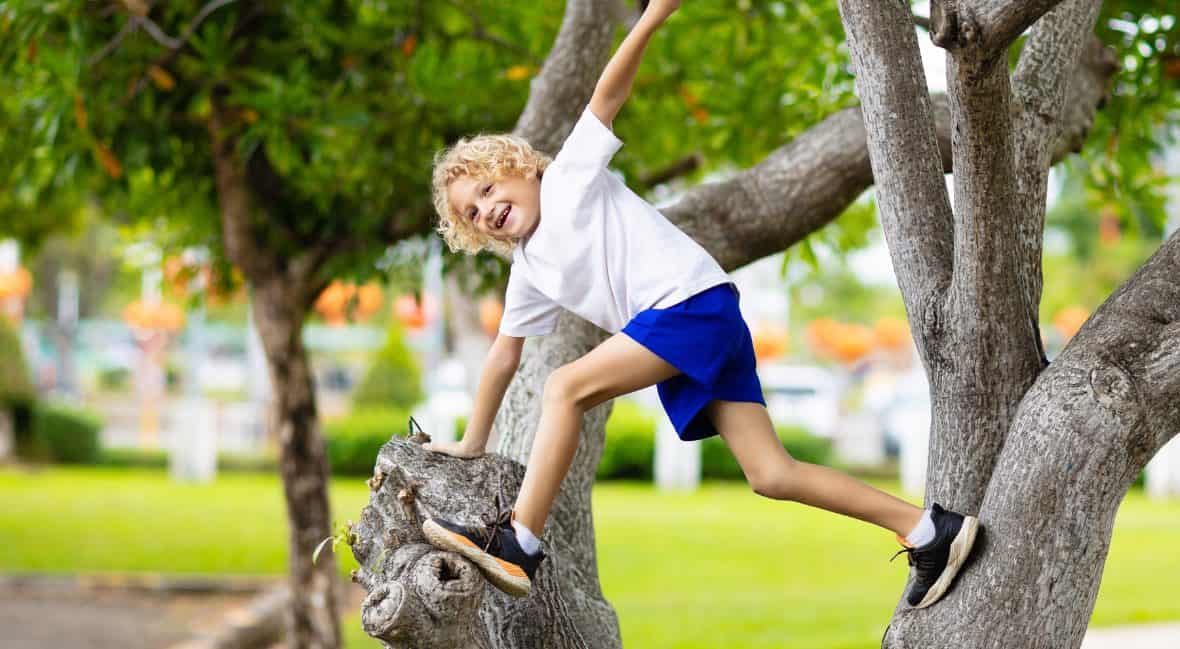

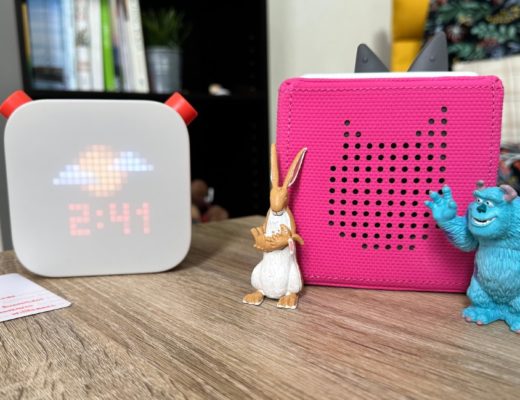
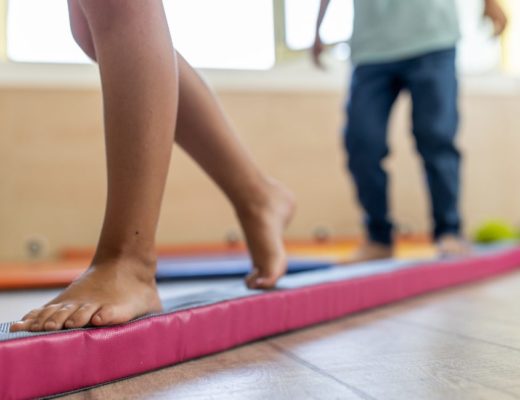
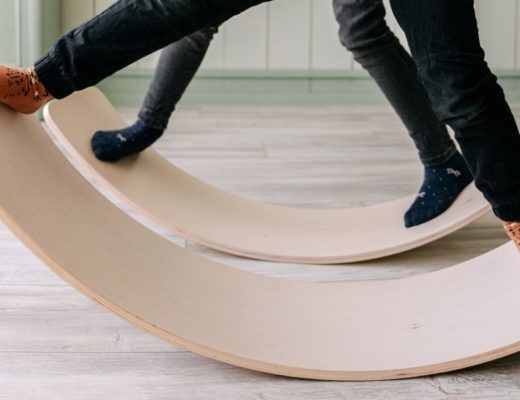
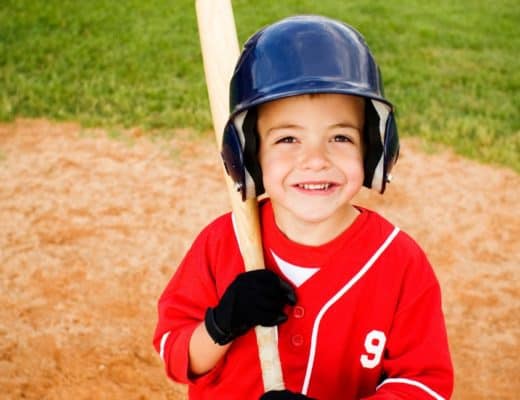
No Comments